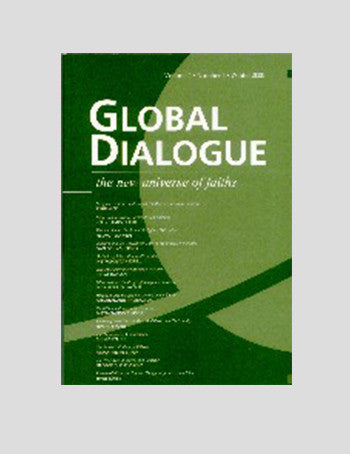
GLOBAL DIALOGUE
Life at the Crossroads
A Long Experience of War': Gaza in Historical Perspective
Before Israel’s blitz on the Gaza Strip in late-2008/early-2009, one might have found individuals around the world who either had never heard of the territory or were unable to pinpoint it on the map. In the course of that war—shown with raw clarity in live television reports beamed around the globe—any excuse for ignorance evaporated. Gaza became a part of daily chatter worldwide. The immensity of the problems sealed up in this tiny strip of land at the south-eastern end of the Mediterranean was clear for all to see. So, too, was the extraordinary spirit of defiance—at least among the hard-headed leaders of Hamas, the Islamic group that governs the Gaza Strip. There was suffering among the people of Gaza on a large scale. Up to 1,500 were killed, and many thousands more wounded. The destruction beggars description.
Yet, Israel failed to achieve the stated aims of “Operation Cast Lead”. Hamas was not destroyed, nor was the organisation’s ability to manufacture and fire rockets into Israel. Furthermore, the combined might and ferocity of the Israeli army, navy and air force did not succeed in pressuring Hamas sufficiently to force the latter to release the captured soldier, Gilad Shalit.
This spirit of defiance, it turns out, is nothing new. Life at the Crossroads tells us that the people of Gaza have been involved in battles of one kind or another since the start of historical records. Gerald Butt, in the space of a mere 150 pages, relates the history of Gaza from earliest times, when “small groups of Chalcolithic hunters and farmers established communities in the late 4th millennium bc” (p. 26), right up to the end of Operation Cast Lead in 2009. Given the pace of this sprint through the centuries, this short book, by a veteran journalist and Middle East expert, does not pretend to be an academic work. Rather, it is the product of an author whose skill is, above all, to make information accessible to a non-specialist reader.
The book has many virtues besides readability. By trawling through established works of history, the author has collated many brief and obscure references to Gaza through the millennia, and supplemented them with his own observations on the ground and interviews with inhabitants of the territory.
He also does his best to seek out the few remaining buildings and the sparse physical evidence that link—however tenuously—the momentous events of the past with today’s neglected and war-damaged city. This is a book to take with you if you are contemplating a visit.
The opening words of Chapter 1 set the tone for the whole book: “The story of Gaza is one that is interspersed, from the very earliest years of recorded history until today, with war and conflict” (p. 9). One of the first conquerors was Tuthmosis III, who moved north out of Egypt with his army to capture the land of Canaan in 1468 bc.
From the time of the pharaohs onwards, any military power with territorial aspirations either to the north or the south had to pass through Gaza. More to the point they had to conquer, subdue and occupy Gaza until they had achieved their particular objective. For it was Gaza’s misfortune to lie on what is referred to in the Old Testament as “The Way of the Sea”—the route linking Egypt and the Arabian peninsula to the lands of the eastern Mediterranean and the Fertile Crescent to the north. As Butt vividly puts it:
Land which more recently has heard the thunder of tanks and artillery and the scream of jets overhead would have echoed then to the rumble of wooden chariot wheels, the clash of spears and the pounding of hooves, as the first battles for this much fought over territory took place. (P. 30)
Gaza, therefore, for three millennia, was at the crossroads of history. There were periods of peace and prosperity—Gaza was for many centuries a major trading station on the Mediterranean coast and a centre of learning. The fourteenth-century traveller, Ibn Battuta, praised the city’s stylish architecture and fine markets. He described the city’s many mosques, praising in particular, the main one, which was “elegantly built, containing a pulpit made of marble” (p. 131).
But the theme, the leitmotif, of Gaza’s history is war and occupation. So, for example, Alexander the Great besieged the city for three months during the summer of 332 bc before destroying it. The Crusaders took Gaza and were eventually driven out by Salah al-Din. Napoleon and his army occupied the city briefly at the end of the eighteenth century—during the long period of Ottoman rule.
The narrative becomes more colourful once Butt is able to take advantage of more personal documents from our own era—diaries, memoirs and letters. These appear in some quantity at the beginning of the twentieth century. Up until then, Gaza had not featured on the itinerary of travellers to the Holy Land. The author quotes the 1898 Baedeker Guide to Palestine as saying that since the defeat of the Crusaders in the mid-thirteenth century, “Gaza has been a place of no importance” (p. 143).
That changed dramatically during the First World War, when Gaza was the southern-most point of Ottoman control of Palestine. The British general, Sir Archibald Murray, made two unsuccessful attempts to gain the city in 1917, resulting in heavy casualties for the Allies. Sir Archibald had been instructed to make the second attempt after he gave a false report of his progress during the first. After his tactics were exposed as militarily flawed, command of British forces in the region was handed to General Sir Edmund Allenby, who took note of Prime Minister Lloyd George’s desire to see Jerusalem “as a Christmas present for the British nation” (p. 150).
In one of the most poignant passages in the book, the author describes the long and patient build-up to the third battle for Gaza. He contrasts the calm of this period, when troops were able to go bird-watching, with the ferocious battle that was to follow. Allenby himself was a keen bird-watcher and, according to a British newspaper of the time, he stationed “a Yorkshire sergeant at a watering place which migratory birds frequented and whenever a new species arrived the commander-in-chief would forget the cares of the campaign and slip off to the pond to see the bird for himself” (p. 151).
Allenby wrote to his wife, when it became clear that the Allies were in sight of victory: “We attacked Gaza early this morning; and got it almost without opposition.” Then, as if looking ahead to a day of cricket, he continued: “No rain here; but the weather is perfect for campaigning …” (p. 155).
Although the Turkish resistance crumbled fast, when the Allied troops entered Gaza they were shocked by the extent of the destruction they saw. Not only had many of the buildings been destroyed by Allied artillery, but the Turks had scavenged all the wood they could find—including roof timbers—to construct trenches and duck boards. A British priest who entered the city with the victors described Gaza as “a very lamentable spectacle … a scene of very sad desolation” (p. 157).
The destruction of Gaza in the First World War was the most complete in its history to that time. But it was only the latest of many battles fought for control of the Way of the Sea, which linked Palestine with Egypt. Little wonder, therefore, that after three millennia of war and occupation, there is scant physical evidence left of past glories and civilisations.
It is not surprising, either, that over these millennia, the people of Gaza have developed a loathing of occupation and foreign rule. Perhaps this explains why it was from Gaza that the first cross-border attacks on the newly formed state of Israel in the 1950s came—and that in 1987, it was in Gaza that the first intifada began.
Gaza remains the centre of Palestinian determination to end Israeli occupation, whatever the cost—and that cost has been enormous, as the last war with Israel proved.
The book’s greatest strength lies in its analysis of the past few decades of Gaza’s history, leading up to the Israeli onslaught on the territory of 2008−9. The first edition of Life at the Crossroads was published in 1995, and, in the words of the author,
ended on a positive note … Despite obstacles delaying the implementation of agreements between the Palestinian leadership and Israel, the momentum seemed to be in the right direction—towards the ending of Israeli occupation and eventually, perhaps, the creation of an independent Palestinian state consisting of the Gaza Strip and the West Bank. (P. 5)
However, this edition, he points out, “concludes with one of the most brutal wars that the Middle East has experienced, waged on the Gaza Strip” (p. 5).
The period of relative optimism was brief. The second intifada turned out to be far more violent than the first. Suicide attacks against Israeli targets launched from Gaza subsequently drew heavy Israeli retaliation, while internal Palestinian fighting added to the already long list of casualties. Gaza barely saw even the shortest interlude of peace. In summarising the history of Gaza and the effect of such extended periods of conflict on its inhabitants, Butt draws this sobering conclusion:
Looking back over three millennia of history it is hard to think of when the people of Gaza were in a more desperate state than after the 2009 war. They were forced to deal with deaths and injuries that left few families untouched, with psychological scars, and with massive damage to homes, offices and infrastructure. At the same time there was no prospect of chronic economic conditions improving, and no indication that their isolation—from fellow Palestinians in the West Bank, from the Arab world and the international community—was about to end. (Pp. 249−50)
Despite the war, Israel failed to destroy Hamas and the latter won supporters in the Arab world, although it failed to win diplomatic recognition in the region. There appeared to be much unfinished business.
So, with the Israeli blockade of Gaza continuing, economic and social conditions deteriorating, and no end in sight to the rift between Hamas and the West Bank−centered Palestinian Authority, what is to be the fate of the people crammed into one of the most densely populated territories on earth? Butt draws conclusions of which politicians in the Middle East and elsewhere should take note:
The battles and blockades, the loss of life and the destruction that Gazans have endured in the past century have shaped their character in a way that has made them tougher and more determined than other Palestinians. They have had to be. The longer that Gazans live separated from the West Bank and the wider Palestinian community, the more likely it is that they will become something akin to a race apart—on territory steeped in history, but with a long experience of war. (P. 250)
It goes without saying that if Butt’s prediction is correct, the increasing isolation of Gazans from the rest of the world will complicate still further any attempts to find an honourable and lasting Middle East peace deal. It is a message that the Obama administration and governments around the world should take seriously. Cold-shouldering Gaza will not force Gazan Palestinians to the negotiating table.
Review by Michael Theodoulou, a Middle East correspondent for The National, the Abu Dhabi−based English-language daily.
The review was published in Global Dialogue, volume 12, no.1, Winter/Spring 2010—Working the Dark Side
Book Review - 'A Long Experience of War': Gaza in Historical Perspective


